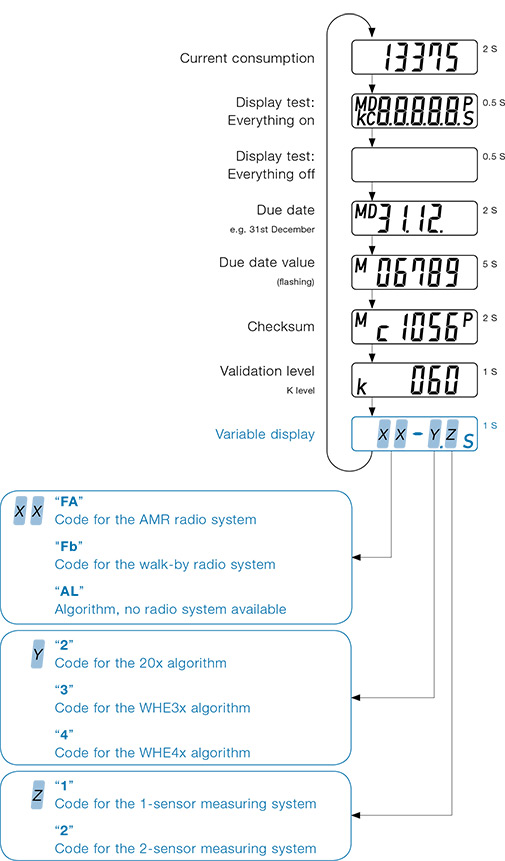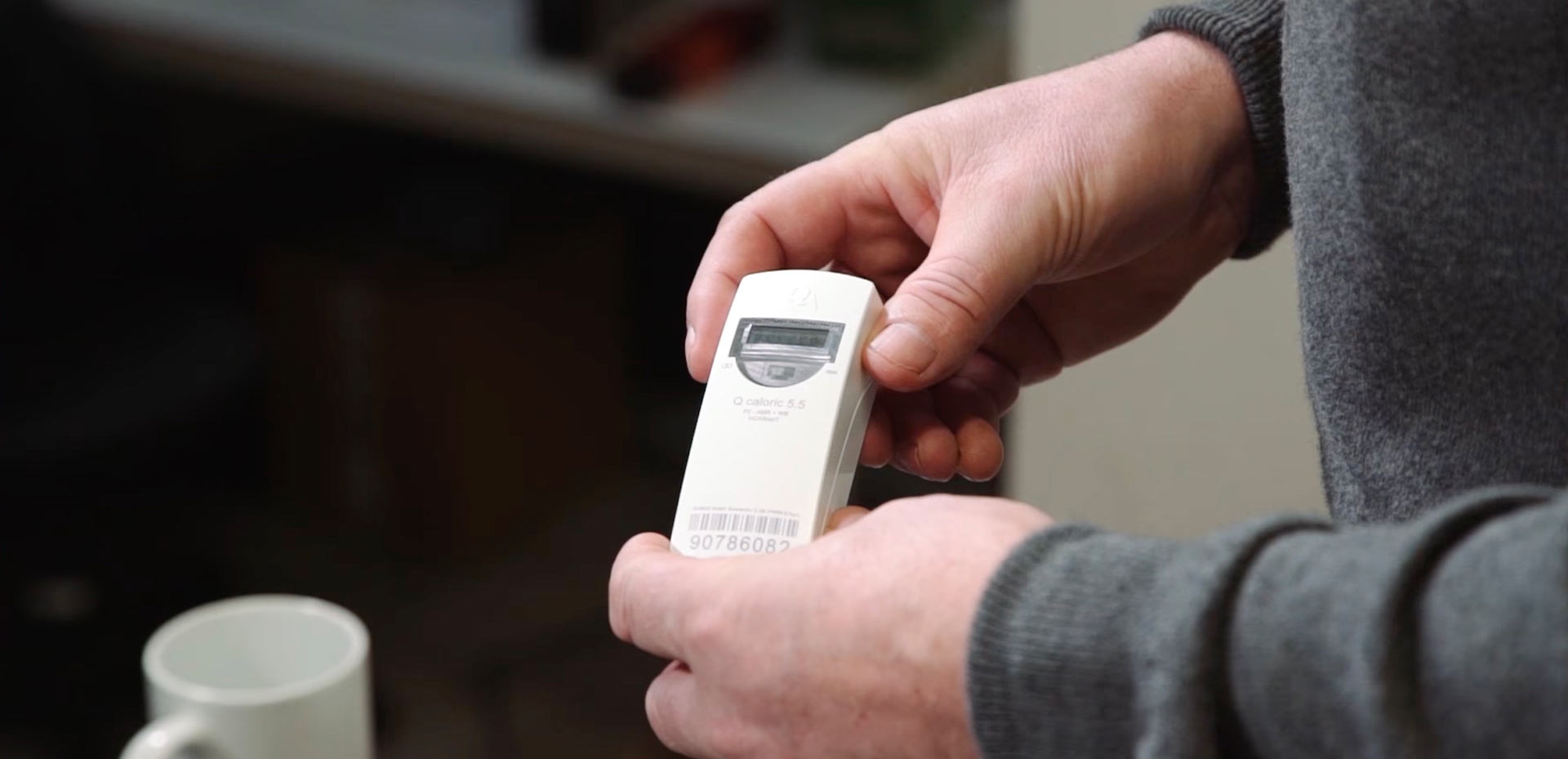HEAT COST ALLOCATORS
made by QUNDIS.
Easy data processing.
HEAT COST ALLOCATORS
made by QUNDIS.
QUNDIS is the market leader in the field of heat cost allocators.
At our plant in Erfurt more than 4 million devices are produced and sold on the world market every year.
While heat cost allocators based on the evaporation principle have a measurement tolerance of up to 15 percent, the Q caloric technology (2-sensor models) ensures a maximum deviation of 2 percent.
Our electronic heat cost allocators represent the highest technological standards and offer the largest range of applications worldwide. Thanks to our comprehensive database of heat transfer values (KC values), the Q caloric model can be used on almost any radiator.
Due to the standardisation of the radio telegrams and the readout files, as a measurement service provider you offer your clients (house administrations, owners, etc.) the greatest possible independence (from devices, manufacturers, etc.).
In addition, you can offer tenants a high degree of transparency when measuring consumption, as they can also read the consumption according to the standard and product scale directly on the device themselves.
With single-sensor models, our devices assume a fixed room temperature. Our extremely accurate 2-sensor models can include environmental factors such as solar radiation or hot spells in the billing because they record the room temperature separately. This allows the recording of heat consumption in the home to be even more consumption-based.
Improved wireless transmission performance and flexible readout times
The Q caloric 5.5 heat cost allocator enables an even simpler and more flexible readout of meters than before. Metering can be implemented both on site and in mobile form. The significantly greater wireless transmission range simplifies remote readout, improves data quality and cuts readout times.
The more flexible readout times are a further productive new feature. This means that metering services and housing companies are no longer tied to specific times of the year. As a result they have more flexibility in planning their recording of consumption data and the billing of energy costs. Meter reading can be implemented both on site and in mobile form, because parallel to walk-by wireless telegrams Q caloric 5.5 also sends AMR telegrams.
The benefits at a glance:
Almost every radiator type on the market is recorded in our comprehensive KC values database. The Q caloric heat cost allocators can therefore be used on practically all radiators.
Our heat cost allocators can be supplied with or without radio and with or without an infrared interface. This allows you to set up the readout processes as you wish.
The Q caloric heat cost allocators can be displayed on a unit or product scale if required. This gives end consumers the opportunity to track their energy consumption very transparently in their bills.

Thanks to the independent readability and a measurement tolerance of maximum 2 percent, QUNDIS heat cost allocators provide very accurate measured values.
Thanks to the standardized radio protocols and file formats, the consumption data can be easily exported and further processed by common billing programs used by metering service providers.
Thanks to the heat cost allocators being equipped with C-mode radio communication, the devices can also be read on the move 365 days a year. You do not need access to the apartment.
Fast identification of attempted manipulation.
All benefits
at a glance.
Are you a tenant and have questions about your metering technology or billing? Then please contact your property management company or the responsible metering service.
Heat cost allocators are devices that determine the relative share of a radiator in overall consumption. They are an inexpensive way to divide heating costs fairly among residents. They have proven themselves millions of times over – and have been doing so in Germany since the 1920s.
The heat cost allocators are mounted directly on the radiator, where they measure the temperature difference between the radiator surface and the room temperature. There are two types of measurement: either by electronic heat cost allocators or thermodynamically by heat cost allocators that work on the evaporation principle.
A heat cost allocator with a uniform scale only displays a non-standardised value. The consumption value is only obtained by calculating with the help of a formula.
European standard EN 834 (Point 6.3) stipulates that only those mounting points on the radiator where the average heat output is most effective over a wide temperature range should be selected. Depending on the radiator type, the mounting location, mounting height and type of mounting are therefore prescribed in detail.
As a rule, the installation of the heat cost allocators must be carried out at 75 percent of the radiator height for both evaporative and electronic heat cost allocators. Nevertheless, the optimal installation points for radiators that look similar can sometimes differ considerably. Therefore, only an expert can make a correct assessment.
This is how the installation of our heat cost allocator Q caloric 5.5 is carried out:
All heat cost allocators used in Germany must be tested and approved in accordance with § 5 of the German Heat Cost Allocation Ordinance (HKVO). The technical basis for this is laid down in the European Standard EN 834 for electronic heat cost allocators.
Electronic heat cost allocators measure the heat output of a radiator much more accurately than evaporative heat cost allocators. This is because the room temperature is also taken into account in the electronic heat measurement. Our heat cost allocator Q caloric is programmed to distinguish very precisely between ‘real’ radiator heat and other heat sources, such as solar radiation. Thanks to the very high temperature sensitivity, metering errors are greatly minimised with this technology.
With evaporative heat cost allocators, unwanted external influences such as humidity or solar radiation affect the measurement. This leads to inaccuracies of up to -/+ 15 per cent in the measurement.
Another advantage of electronic heat cost allocators is that, unlike evaporative heat cost allocators, they can measure precisely on the meter reading date and display different types of value. These include, among other things, the annual consumption value on any due date and the current consumption. In addition, the display can be compared directly with the annual bill.
Heating cost distributors only operate if the temperature of the radiator is higher than the room temperature.
With uniform scales, each heat cost allocator is programmed with the same heat transfer coefficient values. When the bill is drawn up, the display values are multiplied by the radiator's individually determined rating factors. The rating factor depends on the radiator's heat output, the radiator type and type of installation, and is normally printed on the bill. The sum of the values determined in this way is reflected in the bill as the unit of consumption. With product scales, each heat cost allocator is already programmed with the heat transfer coefficient values which match the radiator. The display values on the heat cost allocator are identical to the values on the bill.
With large radiators, it may be that two heat cost allocators have to be attached because of the uneven heat distribution. In these cases, the heat output of the radiator is assessed as the average value between the two heat cost allocators. This ensures that heating costs are not paid twice. The aim of this measure is to record the heat output correctly.
In single-sensor operation, a constant value is specified for the ambient temperature and only the radiator temperature is measured. In dual-sensor operation, the actual temperature difference between the ambient temperature and the radiator temperature is determined. The measurement recording takes place by means of one (radiator) or two temperature sensors (radiator and room air temperature sensors).
In our devices we normally have the clock set to winter time. This means that the set starting time is correct in winter, but one hour too late in summer. For this reason, the starting time is set one hour earlier for the whole year. To compensate, the device transmits one hour longer in summer with the stopping time set for winter. We ensure the starting and stopping times expected by the meter reader throughout the year by starting transmission one hour earlier in winter and continuing one hour longer in the evening in summer.
In addition, one hour each is added to the starting and stopping times in order to allow for clock accuracy. This ensures that in 10 years' time the device clock will not deviate by more than one hour from the actual time. By adding this tolerance to the starting and stopping times, it is ensured that even after 10 years the devices will still transmit within the specified time difference between the starting and the stopping time.
Hummel
helps!
